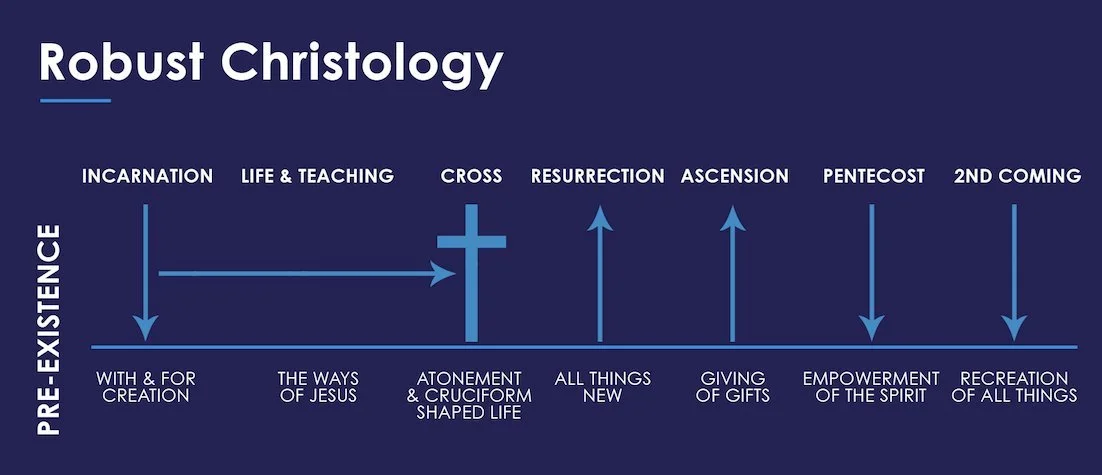Recapturing the Missionary Nature of the Church
We have corrupted the word "Church" by constantly using it in a non-missionary sense. ~ Lesslie Newbigin
If mission defines who Christ is, and if Christ sends us as He was sent, then mission defines who we are. ~ Albert Curry Winn
People today understand the church in two primary ways. The first view is what some call the “Reformation heritage” perspective. (1) The point with this understanding of the church is that Protestants have inherited a particular view of the church from the Reformers, emphasizing the right preaching of the Word, the right administration of the ordinances, and the proper exercise of church discipline. Historically these have been referred to as the “marks” of the church. While each of the three marks are important aspects of church life, this view has left us understanding the church as a place where certain things happen. In other words, a person goes to church to hear the Bible taught “correctly,” to participate in the Lord’s Supper and baptism and, in some cases, to experience church discipline. Once again, all good things, but is that the way we want to define the church? Does a place-where-certain-things-happen understanding speak to the real essence and nature of the church?
The second view is a slight variation on the Reformation heritage definition. This “contemporary variation” view is perhaps the most prevalent way people in America understand the church today — that it is a vendor of religious goods and services. From this perspective, members are viewed as customers, for whom religious goods and services are produced. Churchgoers expect the church to provide a wide range of religious services, such as great worship music, preaching, children’s programs, small groups, parenting seminars, and so on.
One of the major issues with both of these views of defining the church is that the church is seen as an institution that exists for the benefit of its members.
The alternative vision of the church is to see it as a people called and sent by God to participate in His redemptive mission for the world. The nature of the church — rooted in the very nature of God — is missionary. Rather than seeing ourselves primarily as a sending body, we must see ourselves as a body that is sent. Of course, the church still gathers, but the difference is that we don’t simply gather for our own sake; instead for the sake of others or, better yet, for the sake of God’s mission. We come together as a collective body of followers of Jesus to be equipped through prayer, worship, and study and then to be sent out into the world. The church is to be a gathered and scattered people.
Missionary Lesslie Newbigin stated it this way:
“The church is the bearer to all the nations of a gospel that announces the kingdom, the reign, and the sovereignty of God …. It is not meant to call men and women out of the world into a safe religious enclave but to call them out in order to send them back as agents of God’s kingship.”
Why this all matters
To grasp the importance of understanding the church as missionary, consider the idea of cultural distance. This is a simple missionary tool to help discern just how far a person or a people group is from a meaningful engagement with the gospel. To determine this, we can to see it on a scale like this:
Each numeral with the prefix m indicates a significant cultural barrier to the meaningful communication of the gospel. Barriers include such things as language, race, history, worldview, traditions, beliefs, political affiliation, etc. The greater the number of cultural barriers there are, the increased complexity there will be in communicating with another person.
The reason this discussion is important for this particular lesson is because the church in the North America operates almost exclusively in the sphere of m0–m1, as shown in the following illustration.
In other words, too many churches in North America function in a sort of Christian bubble where there are little or no cultural barriers. This is a significant problem because it is we who are the called, sent missionary people of God, which will sometimes mean we must go to where people are. If we fail to go to the people, then to encounter the gospel meaningfully, they must come to us. This is the inbuilt assumption of the attractional (vendor of religious goods and services) church, and it requires that the nonbeliever do the cross-cultural work to find Jesus, and not us! And make no mistake, for many people, coming to a church service involves some serious cross-cultural work.
When we ask them to come to us, we are in essence asking them to be the missionaries!
Instead, we must see that we are missionary people, sent to participate with a missionary God, who desires to reconcile all of creation to Himself, for His glory. We, the church, are a chosen people to bless and reach the nations.
(1) George Hunsberger, The Church Between Gospel and Culture (Grand Rapids, Mich.: Eerdmans, 1996), 337.
If you are interested in more, check out the video below.




